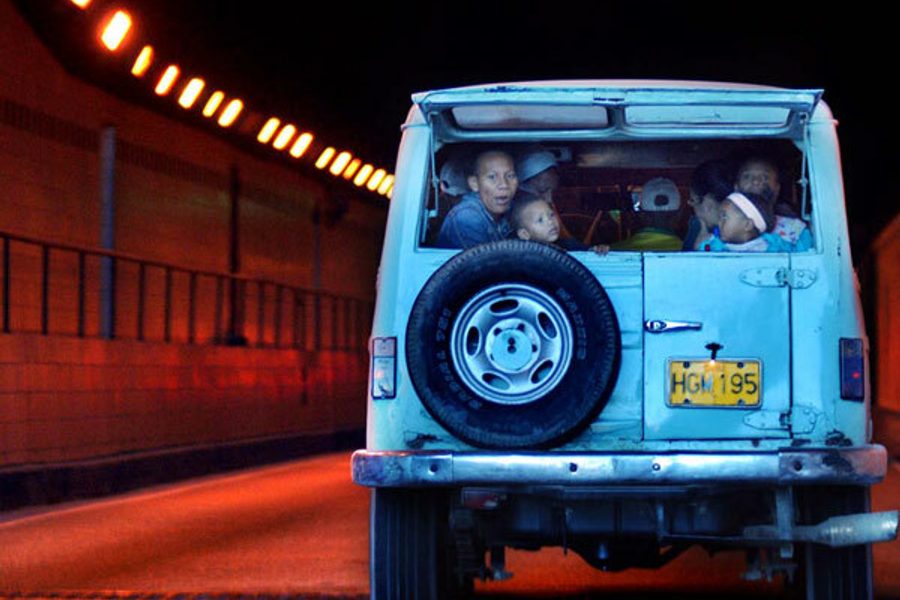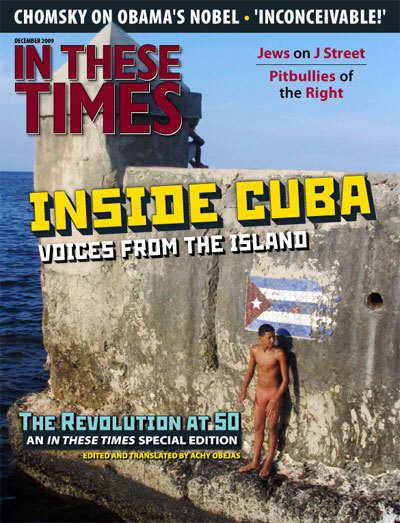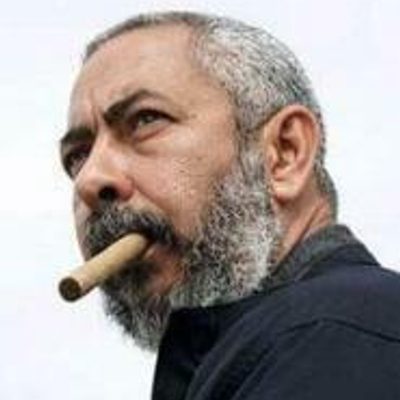
If a group of people were to alight on the coast of Cuba in a hot air balloon and, like characters in a Jules Verne novel, try to understand their surroundings in order to guarantee their own survival, they’d certainly think they had arrived in an enigmatic world where the most varied and intricate mysteries reign, hermetically sealed from logical thinking and barely intelligible even to the native population on this singular island.
After half a century of revolution and almost the same number of years under socialism, Cuba has made irrefutable – if controversial – strides in culture, sport, health and education. The historic leader no longer officially governs, but he lives– and occasionally thunders – though strictly through his writings. The new president, with a discourse of realism, creates hope for change that, nonetheless, comes slowly or not at all.
The miracle is that we survive in the midst of persistent scarcities (food, always and above all else, food). Our society is increasingly more diverse, pluralistic and weary. A notable and increasing percentage of the population is impoverished and either apathetic or focused on exile as an answer. The orthodox socialist economy, in which three official currencies circulate, is dysfunctional. We are besieged by a North American commercial embargo that is almost 50 years old. But more than anything, we are overwhelmed by our own proverbial inefficiency because of excessive central planning.
These would be, among other and greater matters, the most visible characteristics of contemporary Cuban life and the keys to the mysteries in which that life is shrouded.
Perhaps the first and most curious enigma arising from life in Cuba is the daily planning by its citizens. Even the Cuban government recognizes that the salary (on average 440 Cuban pesos – CUPs – per month) it pays its workers – the vast majority of the population – is not enough to cover their needs. How, then, do Cubans survive?
Let’s say that a pair of the most ordinary shoes costs around 20 CUCs (Cuban convertible pesos, a hard currency) – more or less equivalent to $25 or 500 pesos. In other words, a pair of the most ordinary shoes costs about 60 pesos more than the average monthly salary of 440 pesos. How does a worker buy those shoes and also pay for food, electricity, transportation, etc.? On the face of it, an insolvable mystery.
Another mystery: The groceries subsidized by the State and provided through the monthly ration cards barely cover the nutritional needs of a person for 12 days. How is a Cuban supposed to eat for the rest of the month, especially when prices at the CUC stores and the farmers’ markets are prohibitive? Let us realize that one liter of soy cooking oil costs 2.15 CUCs, or $2 U.S., or 54 pesos – that is about an eighth of the average worker’s monthly salary just for one liter of oil.
One more mystery: If a ride in a taxi that runs along a specific city route costs 10 pesos and workers earn, on average, about 18 pesos a day, how is it possible that so many people depend on those taxis to get to work?
And if, in spite of these and so many other real-world, day-to-day mysteries, the nation’s media repeats over and over that the island is some kind of oasis for justice, equality, security, educational guarantees and healthcare, why do so many Cubans emigrate or want to emigrate, especially the young and the skilled? This is another of those many Cuban mysteries.
To help us decipher these conundrums that on first and second glance seem incomprehensible, there is a verb that Cubans use daily – a verb re-semanticized by popular wit – that offers an important clue: resolver, or to resolve.
In Cuba, people resolve when they practice any of the many survival strategies that allow them to buy a pair of shoes, pay for transportation, find enough food so as not to go hungry, paint the house (a gallon of paint costs about 10 CUCs, more than half the average monthly salary) or pay for what’s probably the world’s most expensive cellular phone service.
You resolve, for example, when you have a relative abroad who frequently sends a few hundred dollars to the family “inside,” You resolve when you steal resources from the State (from a chicken thigh to a box of chicken thighs), or use an office with some authority to sell favors or services (it can be exchanging housing or simply obtaining needed documents without a wait). You resolve when you work with tourists who tip, or when you work with an empresa mixta, a Cuban- and foreign-owned business, in which the foreigners (taking on the fiscal burden) pay their Cuban employees under the table in addition to the salary the State gives them. The doctor who accepts gifts from his patients also resolves or, even worse, the teacher who takes what’s offered by parents interested in their children receiving good grades. All these people are resolving something.
Of course, both the act and the need to resolve generate certain social ills: different levels of access to goods and services depending on which goods or services resolve the most; the corruption of many public functionaries (so many that the Cuban leadership recognizes that corruption is an enormous threat to the system’s survival); disdain and indifference by those who can’t resolve or by those who can resolve without the need to work or to make much of an effort to do so.
To resolve, then, is indispensable to Cubans, but it’s also a social, economic and ethical waste. And it will be until the day that the workers mentioned above, in the first mystery, can live on their salaries, as they should be able to in a socialist state with healthcare, education and access to culture guaranteed to all – and still buy a pair of shoes.
The great crisis of the ’90s – officially christened “The Special Period in Times of Peace” – that followed the fall of East European socialism and the disintegration of the Soviet Union (resulting in the loss of the political allies who sustained the island’s economy) generated a deep rupture at all levels of Cuban society: economic, social and ethical.
In 1993, one of the practices introduced to alleviate the crisis was the creation of a double monetary system (Cuban pesos and American dollars), a double economy and a double market. Until that time it had been a crime to own dollars. Since then hard currency – first the U.S. dollar and now also the CUC (these convertible pesos are pegged to the dollar) – is used to price just about everything in the country: from the aforementioned pair of shoes, cooking oil and paint to transportation, fuel and even certain official transactions. In the meantime, the costs of other services subsidized by the State – electricity, phone, medicine, rationed food quotas – have increased and their price in Cuban pesos are now out of reach of most citizens.
In the last three years, the new government in Havana under Raúl Castro has tried to find solutions to these complex economic and social problems. The public acknowledgment that “structural and conceptual” changes to the system are necessary to guarantee its survival was accompanied by specific economic and social policies designed to stimulate certain means of production, service and even morale. These include allowing Cubans to buy computer equipment and cameras in stores that take CUC currency, to enter hotels on the Island where previously only foreigners were allowed, to have cellular phone service, and to rent empty State-owned stores that are now largely overgrown with weeds. The new reforms also eliminate salary caps and allow Cubans to have more than one job. There has been an opening up on issues such as sexuality and the right to sex-reassignment surgery, and a new flexibility on the canons that govern artistic and cultural expression. Limits have been placed on the privileges that certain government bureaucratic sectors and their employees have enjoyed for decades. And moves are afoot to ensure Cuba’s adherence to international protocols on civil and human rights. All these are concrete moves to correct absurd and obsolete restrictions, although as “structural and conceptual” reforms they’re still too subtle given the need of our society and economy for more dynamic and transformative changes.
The centralized economy, the poor efficiency in production, the high cost of living (which must be measured in hard currency, and not the Cuban pesos in which State wages are paid), the great housing shortage (and the bad conditions of much existing housing), the limits on social activity and personal development (like the official travel permit needed to leave the Island; most Cubans would like to eliminate it), and the visible increase in poverty and ghettoization are among the daily burdens Cubans bear today.
Fifty years after the coming to power of the men who still determine the destiny of the country, the reality of the situation is not totally satisfactory to a population that is as literate and cultured as any in this hemisphere, but tired from decades of material scarcities. The better future that was promised and dreamed of, the future that would come after so many sacrifices, continues to be postponed. Instead, there’s always talk about new and more sacrifices.
What real future awaits us? That is another mystery, another enigmatic question to which so few of us have an answer.






